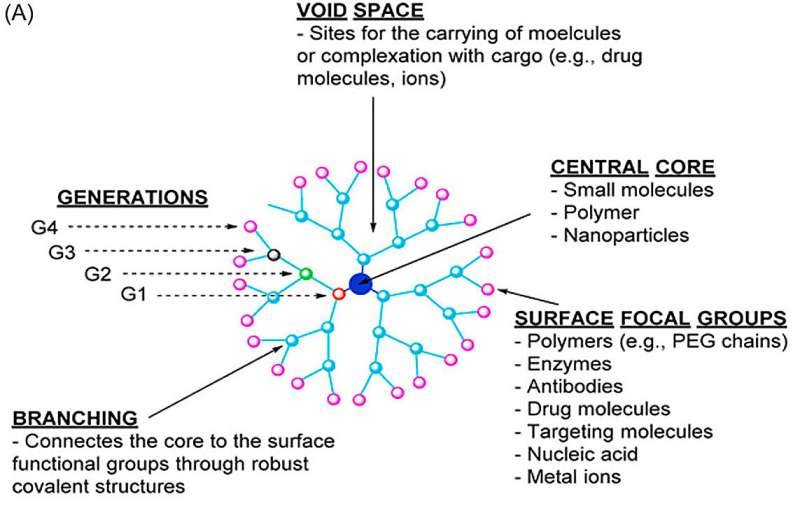
The research team of Prof. Changyang Gong from the Department of Biotherapy, Cancer Center and State Key Laboratory of Biotherapy, West China Hospital, Sichuan University has published a new review showing that rapid growth in nanoparticles as delivery systems hold vast promise to promote therapeutic approaches for cancer treatment. Dr. Xianzhou Huang served as team leader.
The research is published in the journal MedComm – Oncology.
Presently, a diverse array of nanoparticles with unique properties has been developed. These nanoparticles applied in cancer therapy include but are not limited to micelles, liposomes, polymeric nanoparticles, dendrimer nanoparticles, polymersomes, protein nanoparticles, inorganic nanoparticles, exosomes, biomimetic nanoparticles, molecularly imprinted nanoparticles, and hybrid nanoparticles.
However, as complicated as cancer is, there are always different obstacles in treating this disease. Fortunately, nanoparticles have been developed to overcome different challenges and to achieve sophisticated delivery routes for the enhancement of a series of therapies.
These strategies guarantee the delivery and function of loaded drugs. Thanks to the versatility and modifiability of nanotechnology, they can enable the cargoes to long-circulation time, targeting abilities and responsive to pH, redox, GSH, enzymes, hypoxia, ATP, temperature, and ions, even secure the cargoes to their destined subcellar localizations.
Such powerful nanotechnologies have been widely applied in the treatment of cancers. Inspiring advances have been achieved in the field of cancer therapy using nanoparticles. The applications are not limited to single therapies, such as chemotherapy, radiotherapy, phototherapy, immunotherapy, and gene therapy, but also to combination therapies.
A good example is a cooperative nano-CRISPR scaffold (Nano-CD). Nano-CD has co-delivered cisplatin and CRISPR/dCas9 plasmid for GSDME protein production, selectively inducing strong pyroptosis in tumor cells by activating the caspase-3 pathway and the expression of GSDME.
We are rapidly acquiring a much deeper understanding of the challenges and opportunities of a diversity of nanoparticles for cancer therapy. This review has presented the up-to-date progression of nanoparticles for addressing these challenges and alternatively creating more novel opportunities.
We expect that these successions and unremitting efforts of researchers in the field will further promote nanoparticles to shift the paradigm of cancer therapy and make nanoparticle-associated cancer treatments as common clinical approaches of cancer therapy true in the foreseeable future.
More information:
Xianzhou Huang et al, Advances and applications of nanoparticles in cancer therapy, MedComm – Oncology (2024). DOI: 10.1002/mog2.67
Provided by
Sichuan International Medical Exchange and Promotion Association

READ MORE
Turbo Vs Supercharger: Comparing Car Engine Boosters
Turbo Image Gallery Superchargers pressurize air intake to above atmospheric pressure. How is this different [...]
How Animals Survive in a Savanna Full of Predators
Lions in South Africa’s Greater Kruger National Park are feared by many different prey animals, [...]
Close Encounters of the Sneaky Kind
/ “Among dung beetles, for instance, the smallest sneaker males relentlessly attempt to slip into [...]
New gold nanocatalyst: High catalytic activity and excellent stability
STEM images and EDS mapping of SiO2 modified gold nanocatalyst (left) and CO conversion versus [...]
For Some, Pain Is Orange
Wikimedia Commons When Shabana Tajwar was 20, she realized for the first time that she [...]
Caleb Cain Marcus’ Photos of Glaciers on a Disappearing Horizon
Perito Moreno, Plate I, 2010. Patagonia © Caleb Cain Marcus What happens when you lose [...]
Which of Your Favorite Superheroes Is Destroying the Earth?
From the Batpod to the Batcomputer, the Caped Crusader’s gadgets use up a whole lot [...]
Carbon nanotube-based sensor can detect SARS-CoV-2 proteins
The researchers incorporated their sensor into a prototype with a fiber optic tip that can [...]